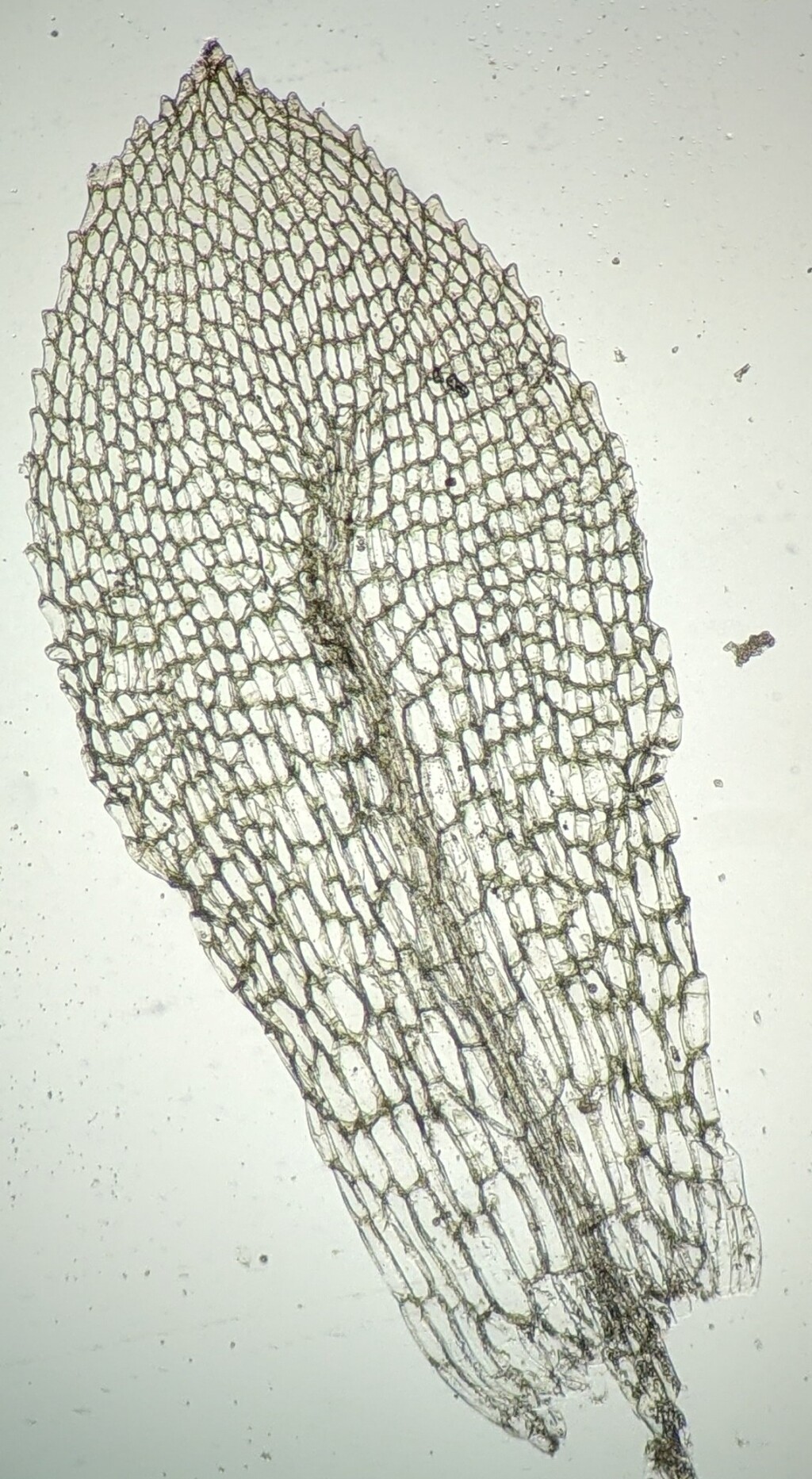Physcomitrium
Autoicous, paroicous, synoicous (not in Victoria) or polygamous (not in Victoria). Asexual reproduction rarely by rhizoidal tubers (not in Victoria). Scattered individuals or turves on soil. Stems simple or branched once, covered in rhizoids. Leaves ovate, obovate to oblong-lanceolate, erect- to wide-spreading when moist, scarcely altered, or crisped to contorted or incurved around capsule when dry; apex obtuse (not in Victoria), acute or acuminate (not in Victoria); costa single, sometimes weakly bifurcate, terminating in apical half well below apex or subpercurrent to short-excurrent (not in Victoria); margins entire to serrate, plane, sometimes with a border or more elongate cells (not in Victoria); laminal cells quadrate, oblong or oblong-hexagonal, becoming more oblong or rectangular toward base; alar cells poorly differentiated. Seta smooth. Capsules erect, symmetric, immersed or exserted, pyriform, hemispheric or globose, sometimes rostrate, operculate or cleistocarpous, annulus absent, a single row of cells or rarely more than one row of cells and revoluble (not in Victoria). Calyptra mitrate, minute or rostrate, smooth. Operculum plano-convex and rostrate, rarely conic (not in Victoria). Peristome absent.
Cosmopolitan except Antarctica, with around 80 species; two species in Victoria.
The reduced, immersed and cleistocarpous sporophytes that defined Physcomitrella and Physcomitridium, in which the Victorian species, Physcomitrium readeri (Müll. Hall.) R.Medina & Goffinet had been placed, has been shown by phylogenetic investigation using DNA sequences from all genomic compartments to be homoplasious features derived recurrently from separate Physcomitrium ancestors (McDaniel et al. 2010; Liu et al. 2012; Medina et al. 2018, 2019). Consequently, these genera are now included in Physcomitrium (Medina et al. 2019).
 Spinning
SpinningSynonyms
Liu, Y.; Budke, J.M.; Goffinet, B. (2012). Phylogenetic inference rejects sporophyte based classification of the Funariaceae (Bryophyta): rapid radiation suggests rampant homoplasy in sporophyte evolution. Molecular Phylogenetics and Evolution 62: 130–145.
McDaniel, S.F.; von Stackelberg, M.; Richardt, S.; Quatrano, R.S.; Reski, R.; Rensing, S.A. (2009). The speciation history of the Physcomotrium-Physcomitrella species complex. Evolution 64: 217–231.
Medina, R.; Johnson, M.G.; Liu, Y.; Wickett, N.J.; Shaw, A.J.; Goffinet, B. (2019). Phylogenomic delineation of Physcomitrium (Bryophyta: Funariaceae) based on targeted sequencing of nuclear exons and their flanking regions rejects the retention of Physcomitrella, Physcomitridium and Aphanorrhegma. Journal of Systematics and Evolution 57: 404–417.
Medina, R.; Johnson, M.; Liu, Y.; Wilding, N.; Hedderson, T.A.; Wickett, N.; Goffinet, B. (2018). Evolutionary dynamism in bryophytes: Phylogenomic inferences confirm rapid radiation in the moss family Funariaceae. Molecular Phylogenetics and Evolution 120: 240–247.



